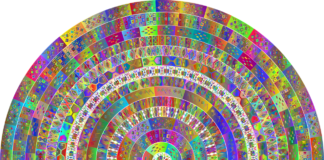Solar windows, also known as photovoltaic windows or solar glazing, represent a promising technology that integrates solar energy generation with building infrastructure. By transforming windows into active energy harvesting surfaces, solar windows offer the potential to enhance energy efficiency, reduce reliance on fossil fuels, and contribute to sustainable building design. In this comprehensive guide, we will explore the principles, applications, advantages, and challenges of solar windows.
1. Introduction to Solar Windows
Solar windows are transparent or semi-transparent photovoltaic devices that convert sunlight into electricity while allowing visible light to pass through. Unlike traditional solar panels, which are typically installed on rooftops or ground-mounted arrays, solar windows are integrated directly into building facades, replacing conventional windows or glazing systems. This integration enables buildings to generate renewable energy without compromising aesthetics or obstructing views, making solar windows particularly well-suited for urban environments and high-density construction.
2. Working Principle of Solar Windows
Solar windows employ thin-film photovoltaic technologies, such as amorphous silicon, cadmium telluride, or organic photovoltaics, to capture sunlight and convert it into electricity. These thin-film materials are deposited onto transparent substrates, such as glass or plastic, forming solar cells that absorb sunlight and generate electrical current. Transparent conductive coatings are applied to the surface of the solar cells to facilitate electron transport while maintaining optical transparency, allowing visible light to pass through the window.
3. Advantages of Solar Windows
Solar windows offer several advantages over conventional building-integrated photovoltaic systems, including architectural integration, enhanced aesthetics, and improved energy efficiency. By replacing traditional windows with solar windows, buildings can harness solar energy while maximizing natural daylighting and reducing reliance on artificial lighting and HVAC systems. Additionally, solar windows can contribute to energy cost savings, reduce carbon emissions, and enhance building sustainability, making them an attractive option for green building projects and sustainable urban development.
4. Applications of Solar Windows
Solar windows have a wide range of potential applications across various sectors, including commercial buildings, residential homes, public facilities, and transportation infrastructure. In commercial buildings, solar windows can be integrated into curtain walls, skylights, and facade systems to generate renewable energy and offset electricity consumption. In residential homes, solar windows can provide homeowners with an alternative energy source and reduce utility bills while enhancing indoor comfort and aesthetics. Solar windows can also be deployed in transportation applications, such as electric vehicles and public transit, to harness solar energy for onboard systems and auxiliary power.
5. Design Considerations for Solar Windows
The design of solar windows involves careful consideration of factors such as transparency, efficiency, durability, and aesthetics. Transparent conductive coatings must strike a balance between electrical conductivity and optical transparency, ensuring efficient solar energy conversion while maintaining visual clarity. Additionally, the choice of thin-film materials, substrate materials, and encapsulation techniques influences the performance and longevity of solar windows, particularly in terms of weather resistance, thermal stability, and UV degradation.
6. Challenges Facing Solar Windows
Despite their potential benefits, solar windows face several technical and economic challenges that hinder their widespread adoption. These include low efficiency compared to traditional solar panels, limited power output per unit area, high manufacturing costs, and concerns regarding durability, reliability, and lifespan. Additionally, the integration of solar windows into existing building infrastructure poses logistical challenges related to installation, maintenance, and compatibility with architectural design requirements.
7. Research and Development in Solar Window Technology
Research and development efforts in the field of solar window technology are focused on addressing the aforementioned challenges and improving the performance, efficiency, and cost-effectiveness of solar windows. Key areas of research include the development of novel thin-film materials with improved light absorption and charge transport properties, innovative transparent conductive coatings, and advanced manufacturing techniques for large-scale production. Collaborative initiatives involving academia, industry, and government agencies are driving progress in solar window technology and accelerating its transition from the laboratory to the marketplace.
8. Market Outlook and Future Prospects
Despite the challenges facing solar window technology, the market for building-integrated photovoltaics is expected to grow steadily in the coming years, driven by increasing demand for sustainable building solutions and renewable energy integration. Advances in materials science, manufacturing technologies, and building codes and standards are expected to drive down costs and improve the performance and reliability of solar windows, making them increasingly competitive with conventional building materials. Additionally, policy support and incentives aimed at promoting energy efficiency and renewable energy adoption are likely to create favorable market conditions for solar window deployment, further stimulating growth and innovation in the sector.
9. Environmental Benefits of Solar Windows
One of the key advantages of solar windows lies in their ability to reduce carbon emissions and mitigate environmental impacts associated with conventional energy generation. By harnessing solar energy and converting it into electricity, solar windows help reduce the demand for electricity from fossil fuel-based power plants, thereby lowering greenhouse gas emissions and air pollution. Additionally, solar windows can contribute to the reduction of urban heat island effects by reducing the need for air conditioning and lowering overall energy consumption in buildings. This makes solar windows a valuable tool for promoting environmental sustainability and combating climate change.
10. Integration with Smart Building Systems
Another important aspect of solar windows is their potential integration with smart building systems and energy management technologies. By combining solar window technology with sensors, controls, and energy storage systems, buildings can optimize energy usage, improve occupant comfort, and maximize energy savings. For example, smart building systems can automatically adjust lighting, heating, and cooling based on real-time energy generation and consumption data from solar windows, optimizing building performance and reducing energy waste. Additionally, solar windows can be integrated with building automation systems to enable remote monitoring, control, and maintenance, enhancing the efficiency and reliability of building operations.
Solar windows represent a transformative innovation in building design and energy technology, offering the potential to revolutionize the way we generate, consume, and manage energy in buildings. With their ability to harness solar energy while maintaining transparency and aesthetics, solar windows offer a sustainable and efficient solution for meeting the energy needs of modern buildings. While challenges remain, ongoing research, development, and commercialization efforts are driving progress in solar window technology, making them increasingly viable and attractive for a wide range of applications. By leveraging the power of innovation, collaboration, and policy support, solar windows can play a key role in advancing the transition to a clean, resilient, and sustainable built environment for future generations.
Conclusion
Solar windows represent a promising innovation in building-integrated photovoltaics, offering the potential to transform windows into active energy harvesting surfaces and enhance the sustainability and energy efficiency of buildings. While technical and economic challenges remain, ongoing research, development, and commercialization efforts are driving progress in solar window technology, paving the way for broader deployment and adoption across a range of applications. By harnessing the power of innovation, collaboration, and policy support, solar windows can play a pivotal role in advancing the transition to a clean, efficient, and sustainable energy future for generations to come.














